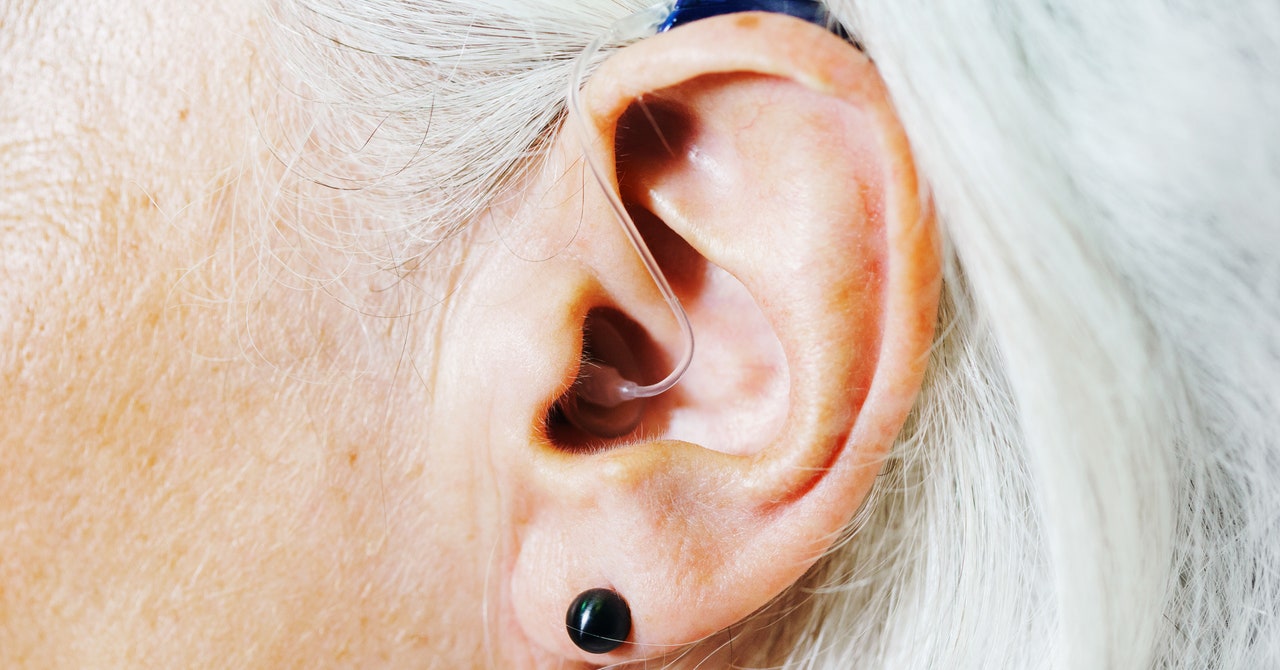
I have nearly 98 percent hearing loss in both ears. For over 30 years, I’ve spent thousands of dollars on my hearing aids, costs that were partially subsided by insurance. This week, the FDA finalized over-the-counter (OTC) hearing aids that can be sold without a prescription to people with mild-to-moderate hearing loss. OTC hearing aids will be available as soon as October.
For the past two years, analysts have been predicting that when OTC hearing aids finally arrive, they will revolutionize the market in the US, making the devices cheaper and possible to obtain without medical prescriptions or testing. But while this new business model means manufacturers can sell directly to consumers, it may have unintended consequences for me or other deaf people who have more than moderate hearing loss.
According to the National Institute on Deafness and Other Communication Disorders, approximately 13 percent of the American population—30 million people—aged 12 years or older have hearing loss as determined by standard hearing tests. About 28.8 million US adults could benefit from wearing hearing aids, but for reasons of cost, accessibility, stigma, and preference, choose not to.
This is not a new issue. In the 1930s, physicians framed deafness as a worrisome public health problem, and collaborated with organizations for the deaf and hard of hearing to advocate regular hearing tests and hearing aid prescriptions. As the hearing aid industry improved the technical specifications of their products, hearing aid dealers used direct selling and storefront displays to appeal to resistant consumers. Consumers could choose among various models and features, and even be fitted for their specific type of hearing loss. Yet increasing maintenance costs, the rising price of new and powerful models, and insurance restrictions deterred many people from purchasing a hearing aid. Even today, hearing aids are still not covered by Medicare.
But this trend has shifted. In 2017, Congress passed the FDA Reauthorization Act (FDARA) to create a category of OTC hearing aids for adults with perceived mild or moderate hearing loss. According to the guidelines presented in October 2021, OTC hearing aids would be available from any seller over the counter and sold at approximately $600 per pair, instead of the average costs of $5000 to more than $14,000 for a pair (which includes fittings and follow-up services). Once OTC hearing aids hit the market, they will offer consumers cheaper, accessible, and technologically sophisticated options for improving hearing. But despite these improvements, the marketing and reception of these OTC hearing aids may end up reinforcing stereotypes that continue to stigmatize deaf communities.
One issue is that without individualized fitting, consumers may experience frustration with their hearing devices, if not further deterioration of hearing loss—an issue that OTC hearing aids will likely exacerbate, as they will have preset or limited settings. Some startups are trying to solve this problem by offering a smartphone app associated with their OTC prototype to approximate the audiologist experience. Yet, as audiologists argue, without a proper hearing test in a controlled environment like a soundproof booth, consumers cannot properly self-diagnose their own hearing assessment.
The most pressing concern is how OTC hearing aids are marketed. Advertisements and press releases emphasize that untreated hearing loss can be serious: In addition to physiological stresses, it is often associated with dementia, depression, and social isolation. These campaigns primarily target elderly people on fixed income, thus reinforcing stereotypical associations of hearing loss with aging. Moreover, advertisements for these OTC hearing aids indicate that they will be “invisible” and therefore able to reduce stigma or embarrassment of deafness. Such marketing strategies push deafened people into a binary: Either they’re “hearing passing” or they’re part of Deaf culture and communicate predominately with sign language. Both groups, however, are expected to accept medical and technological options for “cures.” Yet not all deaf people—myself included—want to be “cured,” and would rather accept their deafness as a spectrum of auditory experience and identity.
